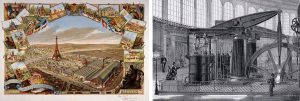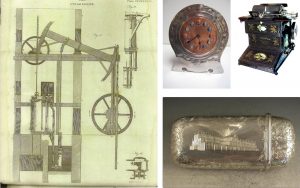Encounter of art and industry
The encounter between art and industry, made possible by the high quality craftsmanship tradition, emerged significantly also in Italy, in the second half of the nineteenth century, coinciding with the start of industrialization. It was to give new life to crafts of high artistic value which boasted ancient traditions and still enjoyed significant prestige: from the manufacturing of glass and crystal from Murano, to the Ginori porcelain, the ebony work of Bologna, Pisa, Siena, the construction of furniture in Milan, to the jewellery crafting of Rome and Naples, to the alabaster work of Volterra, the working of coral of Naples, to the mosaics of Venice, Rome and Florence, just to name a few examples of work appreciated throughout Europe. The production of artistic crafts, albeit at different quality levels, has continued almost without interruption until the present day, overcoming the indifference or hostility of the main cultural trends of the twentieth century, but it was a path which for much part was spontaneous.
Emblematic of this is the story of the little known Italian industrial artistic museums, which arose between the 1860’s and the 1870’s and entered in rapid decline in the twentieth century, which was dominated by ideologies of mass production.
The initial idea came from England where, due to the aforementioned The Great Exhibition of 1851, the South Kensington Museum (later the Victoria and Albert Museum) was founded. The aim of this museum, as with the less fortunate Italian and European museums that used it as a model, was to promote art applied to industry, boosting art manufacturing which was able to achieve an artistic production destined for industrial manufacture. This was at the beginning of design, which many decades later would find in Italy its chosen land, expressing the meeting between handicrafts, art and industry in the most effective way possible.
Industrial art museums were intended to improve the public’s taste and drive manufacturers to make products that were both pleasant and functional. Leaving the niche production of luxury, through applied art, crafts were revived in the new context defined from the start of industrialization. The most important initiative for our country was the Artistic Industrial Museum opened in Rome in 1874, which after a tormented affair was finally decommissioned in 1952.
Other museums that pursued similar objectives with emphasis, on industry or on crafts, were the Murano Glass Museum (1861), the Industrial Museum of Turin (1862), the Municipal Art Museum of Milan (1873), the Artistic Industrial Museum of Naples (1880), also abandoned in the twentieth century.
A prominent feature of these museums, in contradiction with the still current image of dusty and static places, was the prevalent commitment, rather than to the preservation of the finds, to training activities. Their mission was to train qualified professionals in the applied arts, in essence new generations of craftsmen.
The attempt of the promoters of these museums was to re-launch Italian manufacturers at a European level, relying on production of a high aesthetic value, which combined craft and industry, but it was too daring for the times and did not find adequate response either in the political class or in the newly industrial bourgeoisie.
Now consider and discuss with your tutor the following questions:
[bullet_list icon=”play” indent=”10px” style=””]
- Why does artisanal craftsmanship become popular again and emerge as a resource for industry?
- Why are museums such as Kensington founded and what are their objectives?
[/bullet_list]




